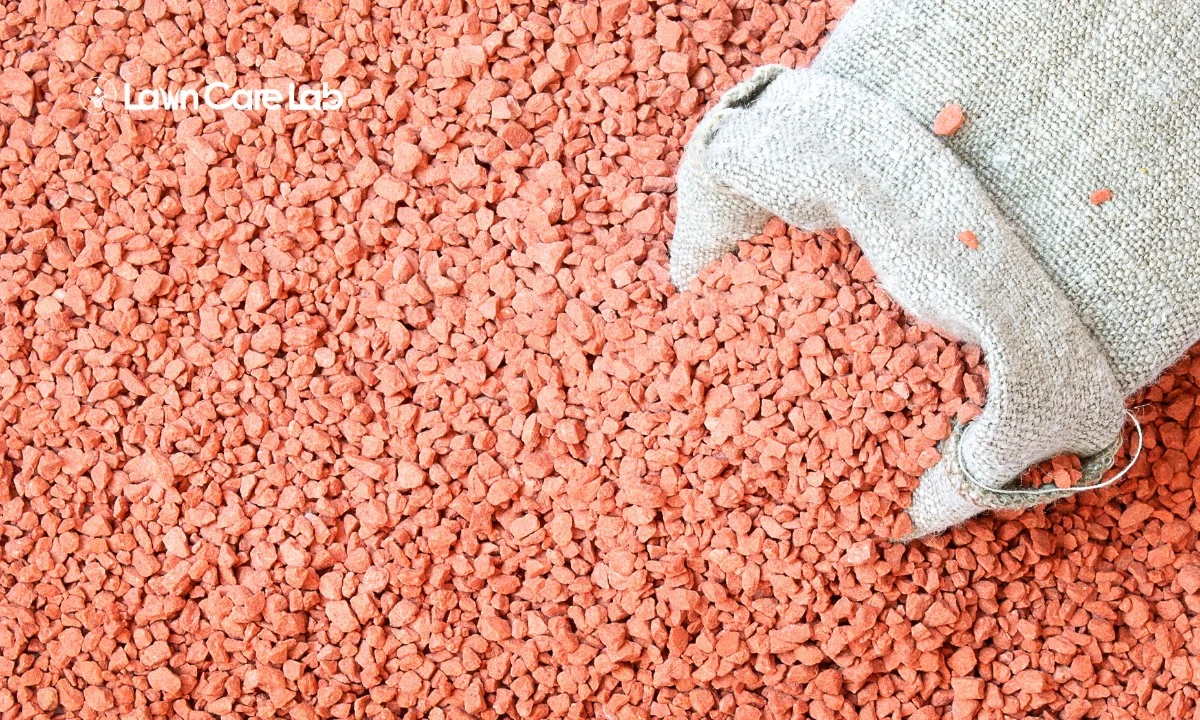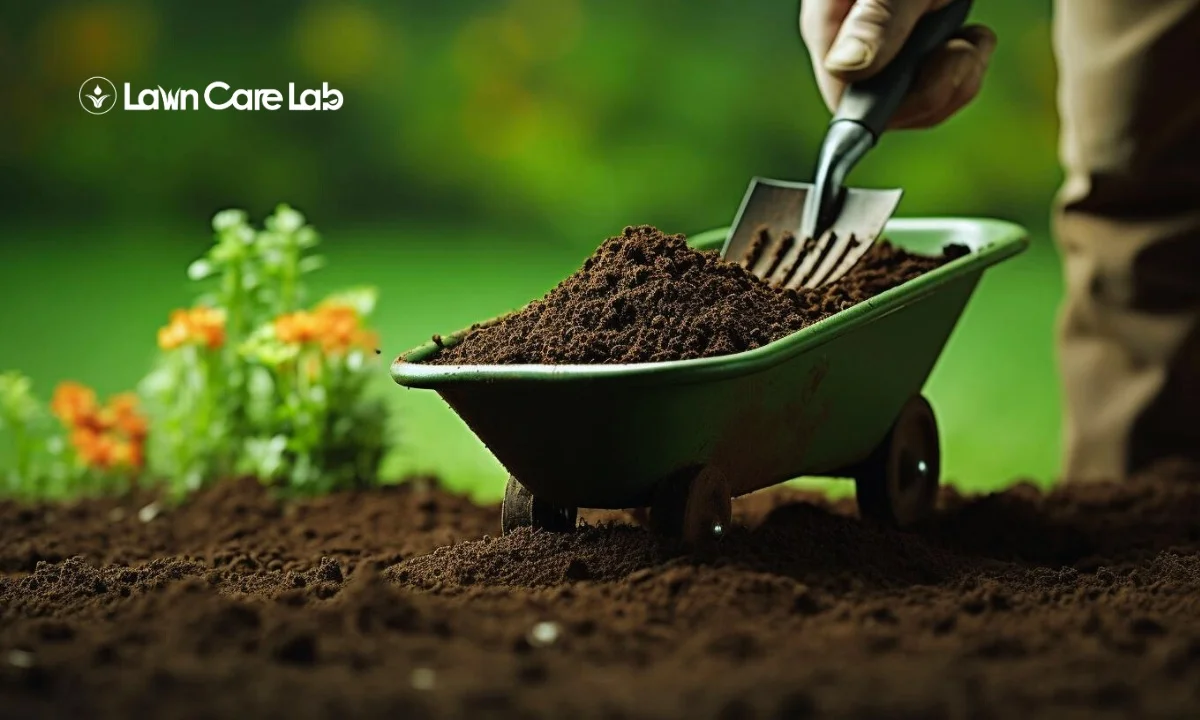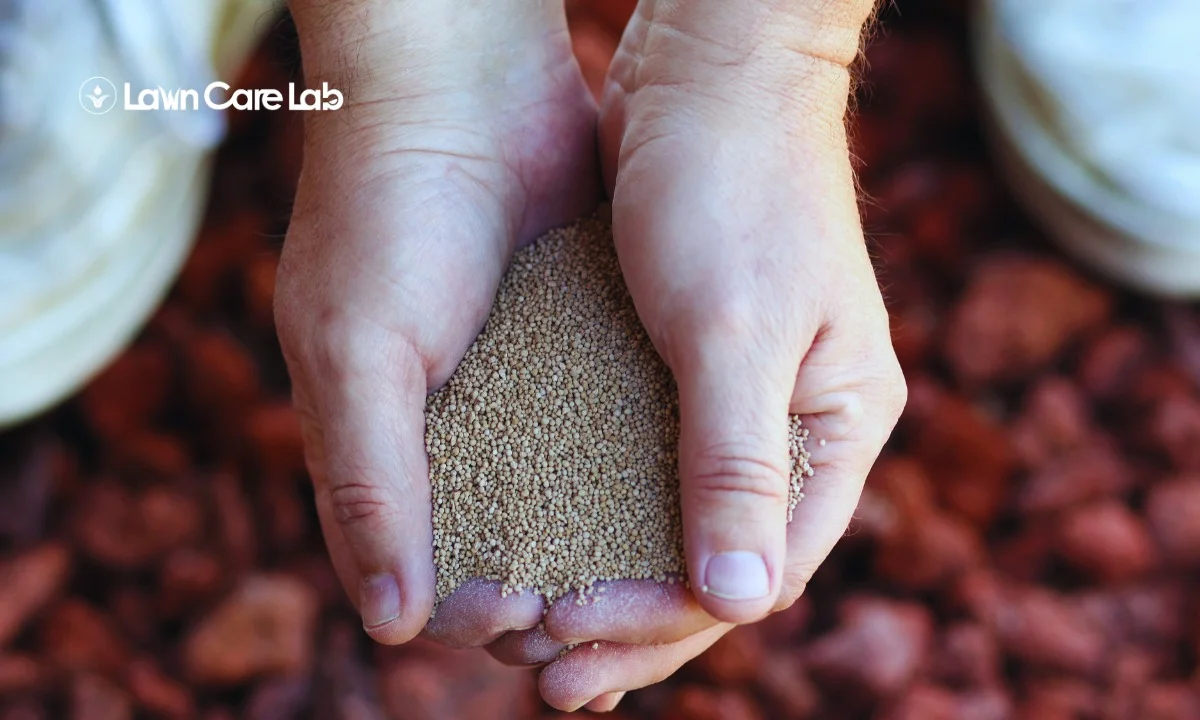Potassium is crucial for maintaining a healthy lawn. It could indicate potassium deficiency if you notice yellow leaves or lackluster growth.
Potassium fertilization is often overlooked but is essential for a greener, healthier lawn.
Let’s examine the vital role of potassium fertilization in maintaining your lawn’s health.
Table of Contents
Introduction to Potassium Fertilization
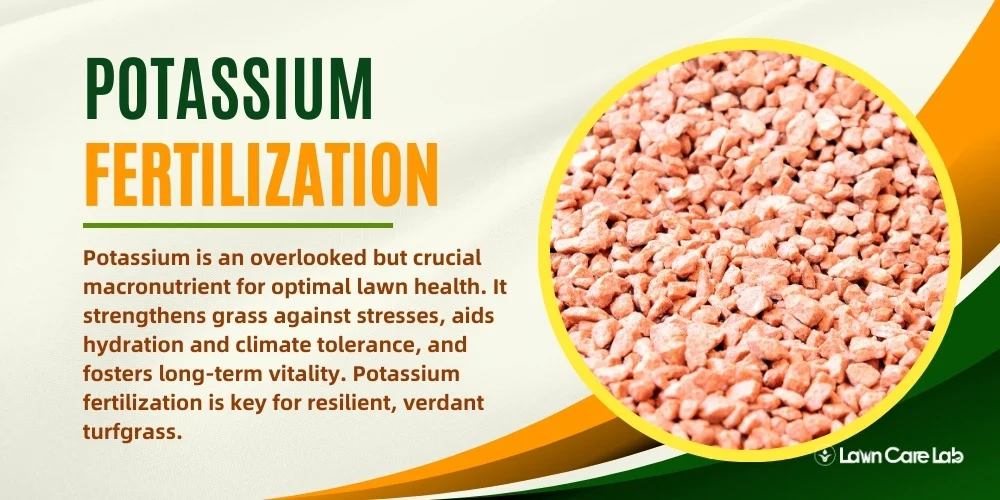
Potassium is a crucial macronutrient that is often overlooked in lawn care. It plays a significant role in the overall health of your lawn, improving water regulation, strengthening cells, and aiding in photosynthesis. Fertilizing your soil with potassium fosters long-term vitality and helps your lawn resist diseases and weather-related stress.
Potassium Basics in Lawn Care
In your pursuit of a verdant, thriving lawn, don’t underestimate the power of a fertilizer rich in potassium. Here’s the reasoning behind this:
- Resilience: Potassium bolsters cell walls, thereby making your grass sturdier and more robust against diseases, pests, and physical harm.
- Hydration Control: This element plays a significant role in managing water within plant cells, which assists your lawn in enduring periods of sparse rainfall.
- Climate Tolerance: Grass fortified with potassium can handle temperature variances, ensuring a robust, lively lawn in any season.
The contribution of potassium to grass health and durability is paramount. By maintaining an optimal potassium level in your soil, you’re not merely nurturing your lawn; you’re fostering a secure, wholesome space for everyone to relish.
Importance of Potassium for Lawn Health
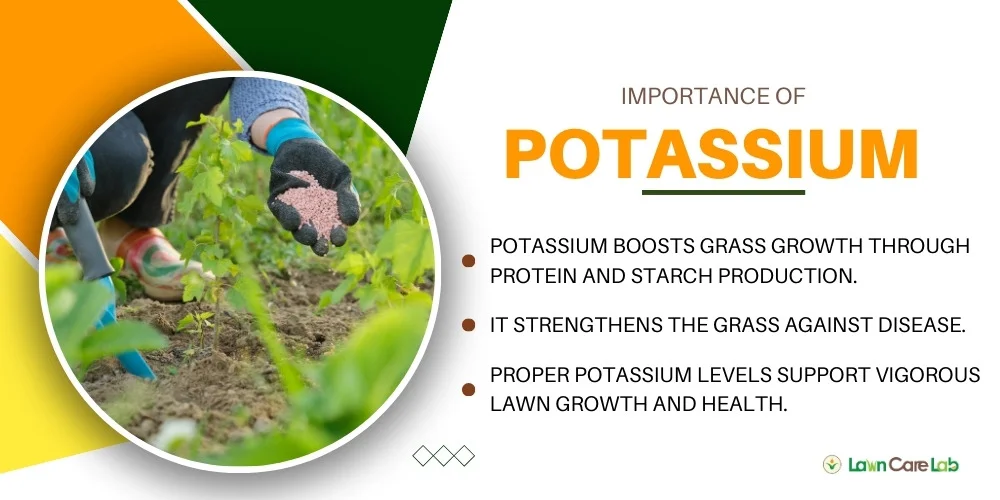
Potassium is crucial for your lawn’s health. It not only promotes growth but also protects your grass against diseases.
Let’s examine how potassium, this unsung lawn care hero, contributes to your grass’s robust growth and disease resistance.
Potassium for Grass Growth and Disease Resistance
Recognizing the role of potassium in your lawn’s growth and disease resistance can significantly enhance its vitality and health. The benefits of potassium are threefold:
- It aids in producing proteins and starches, contributing significantly to grass growth.
- It bolsters the natural defenses of the grass, minimizing the likelihood of disease.
- It fosters vigorous grass growth, augmenting your lawn’s overall health and aesthetic appeal.
A well-nourished lawn looks better and is more resistant to pests and diseases. Maintaining adequate potassium levels in the soil is key to keeping your lawn healthy.
Below, we’ll show you how to detect potassium deficiency.
Identifying Potassium Deficiency
Early detection of potassium deficiency in your lawn is crucial. Yellow or brown grass, weak root systems, and increased vulnerability to diseases and pests indicate a lack of potassium.
To improve lawn health, use potassium-based fertilizer for vital nutrients. A healthy lawn resists diseases and pests naturally, creating a sustainable environment.
Keep an eye out for the early signs, and maintain a consistent fertilization routine to ensure your lawn remains lush and vibrant all year round.
Symptoms of Deficiency
Observing yellow or brown patches on your grass blades often signals a lack of potassium in your lawn. However, there are other signs to be mindful of.
- Feeble and superficial roots: Potassium is vital for fortifying the root system of your lawn. Insufficient amounts can lead to frail, superficial roots that struggle to absorb water and nutrients effectively.
- Heightened vulnerability to stress: Potassium helps your lawn resist drought, frost, and disease stress. Without it, your lawn may struggle more in these conditions.
- Impeded growth: Lawns that lack adequate potassium don’t grow as robustly as they should.
The well-being and longevity of your lawn hinge on sufficient potassium levels. Keep a vigilant eye on these indicators. Early identification and rectification can stave off enduring damage.
Effective Potassium Fertilization
Choosing the right potassium fertilizer requires a thorough soil analysis to match the soil’s potassium needs.
Maximizing the benefits of your chosen fertilizer depends on selecting an appropriate application method.
Choosing the Right Fertilizer
A healthy lawn is not just for aesthetics, it’s also an environmental commitment. Choosing the right potassium fertilizer is crucial for this purpose. Let’s break it down:
- Testing the Soil: Test your soil to understand its nutrient content and make informed decisions about fertilizers for your lawn.
- Selecting the Fertilizer: Soil test results guide fertilizer choice for a balanced nutrient supply, including potassium.
- Correct Fertilizer Application: Over-fertilization harms your lawn and the environment. Be mindful not to saturate your lawn.
Potassium fertilization requires a comprehensive understanding of soil needs for eco-friendly nutrient addition.
Best Practices for Application
To maximize the health of your lawn with potassium fertilizer, apply it during the peak growing season and follow the suggested dosage on the label. Water your lawn thoroughly after application for efficient nutrient absorption.
| Optimal Practices | Rationale |
|---|---|
| Apply during active growth | Maximizes nutrient absorption |
| Adhere to recommended dosage | Avoids excessive fertilization |
| Water after application | Facilitates nutrient absorption |
Applying these tactics will lead to the efficient use of the nutrients, contributing to a flourishing and robust lawn.
Risks and Considerations
As you proceed with your potassium fertilization process, it’s important to consider both the risks and rewards thoroughly.
Overdoing it with fertilization can result in salt damage and a nutrient imbalance in your soil, which can be just as harmful as a lack of nutrients.
Additionally, the potential environmental impact shouldn’t be ignored, as an overabundance of potassium can seep into our groundwater resources.
Over-Fertilization Risks
Over-fertilization can harm your lawn and the environment, despite the common belief that more fertilizer means a better-looking lawn.
Here’s an examination of three key risks:
- Salt Burn: An overabundance of fertilizer can cause salt to build up, inflicting a ‘burn’ on the grass blades. This results in a parched, brown lawn.
- Nutrient Imbalance: An overload of potassium can upset the nutrient equilibrium in the soil, detrimentally impacting your lawn’s health and growth.
- Environmental Impact: Excessive potassium can seep into the groundwater, creating a considerable environmental hazard.
Follow recommended potassium fertilization guidelines to maintain a healthy lawn and protect the environment.
Enhancing Lawn Health with Potassium
Potassium is a critical nutrient for a healthy lawn. As a custodian of your lawn’s well-being, it’s essential to spot potential deficiencies and intervene promptly.
A healthy lawn needs more than just nutrients. It requires an understanding of the importance of each element, particularly potassium, in maintaining robust health.
Recap of Potassium’s Key Roles
Potassium is a vital nutrient for lawn health. It manages water usage, supports growth, and boosts resistance to stressors.
- Overseeing Water Usage in Plants: Potassium regulates plant water levels, impacting growth and health.
- Stimulating Enzymes: The nutrient is essential in activating enzymes, allowing green plants to absorb nutrients and grow robustly.
- Boosting Photosynthesis: Potassium is crucial for photosynthesis, improving your lawn’s energy conversion from sunlight.
Proper potassium fertilization is crucial for maintaining a healthy lawn.
‘Potassium is more than just a nutrient – it’s the backbone of a healthy lawn.’
- How to Create a Lawn Care Schedule for Southern Climates - October 30, 2024
- How to Use Compost Tea to Boost Lawn Growth and Soil Health - October 23, 2024
- The Best Grasses for Saltwater-Exposed Lawns: Coastal Lawn Care - October 17, 2024

